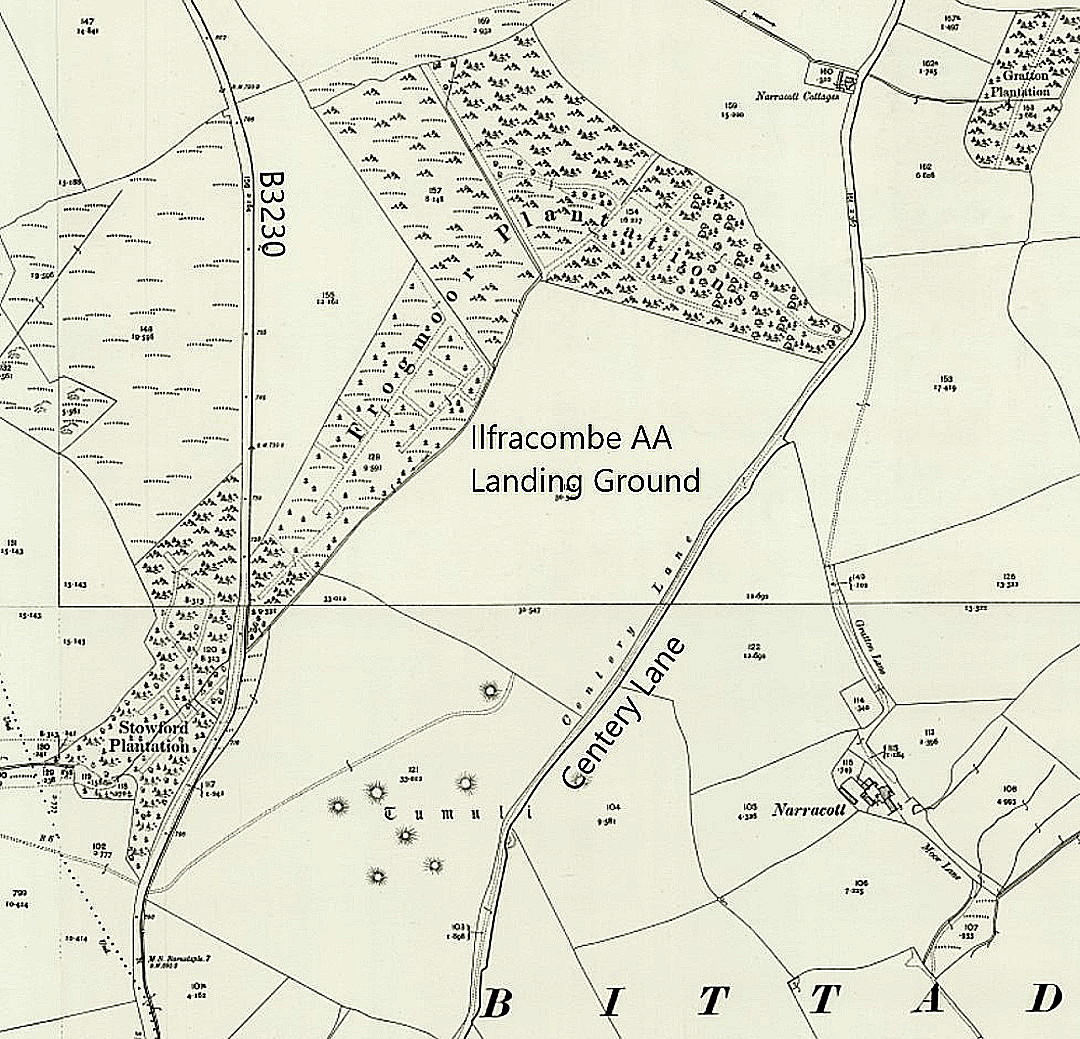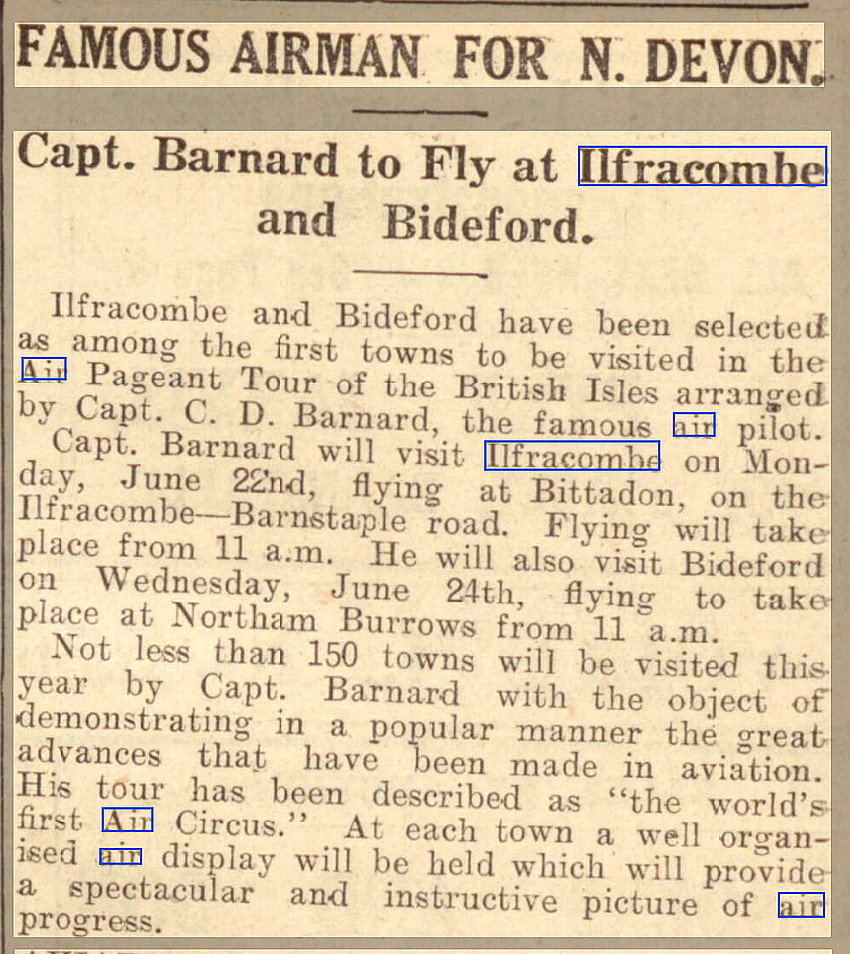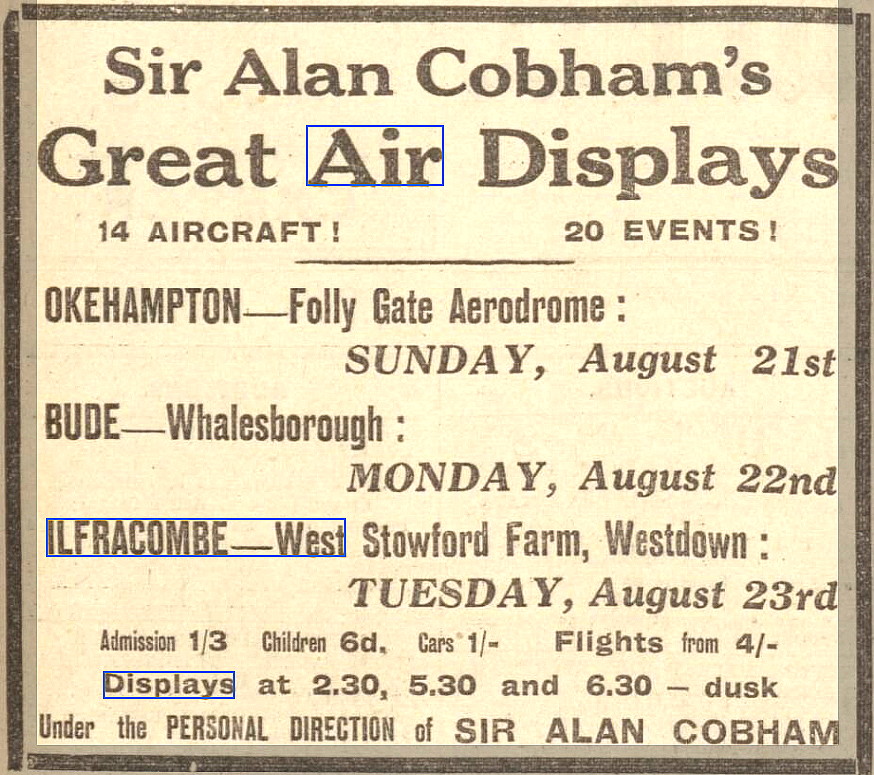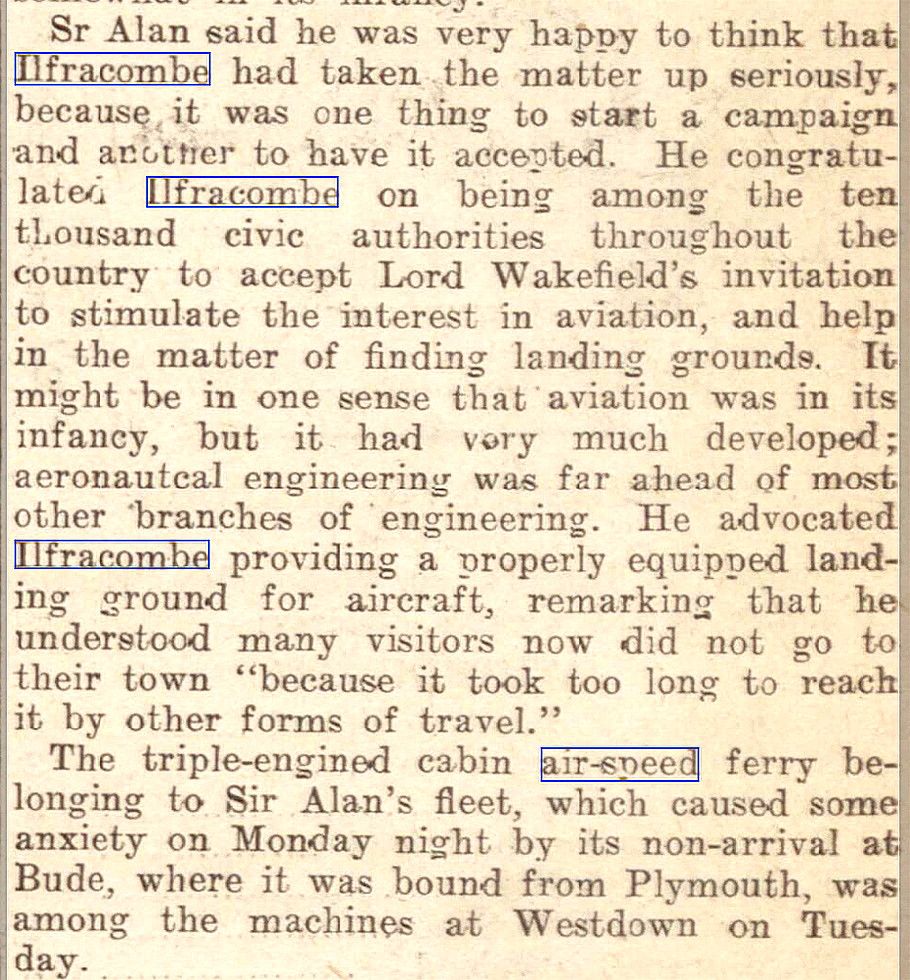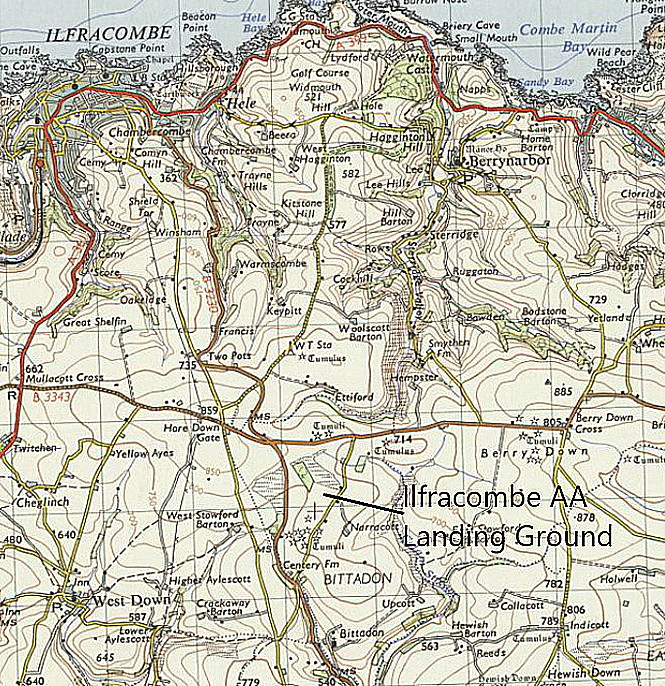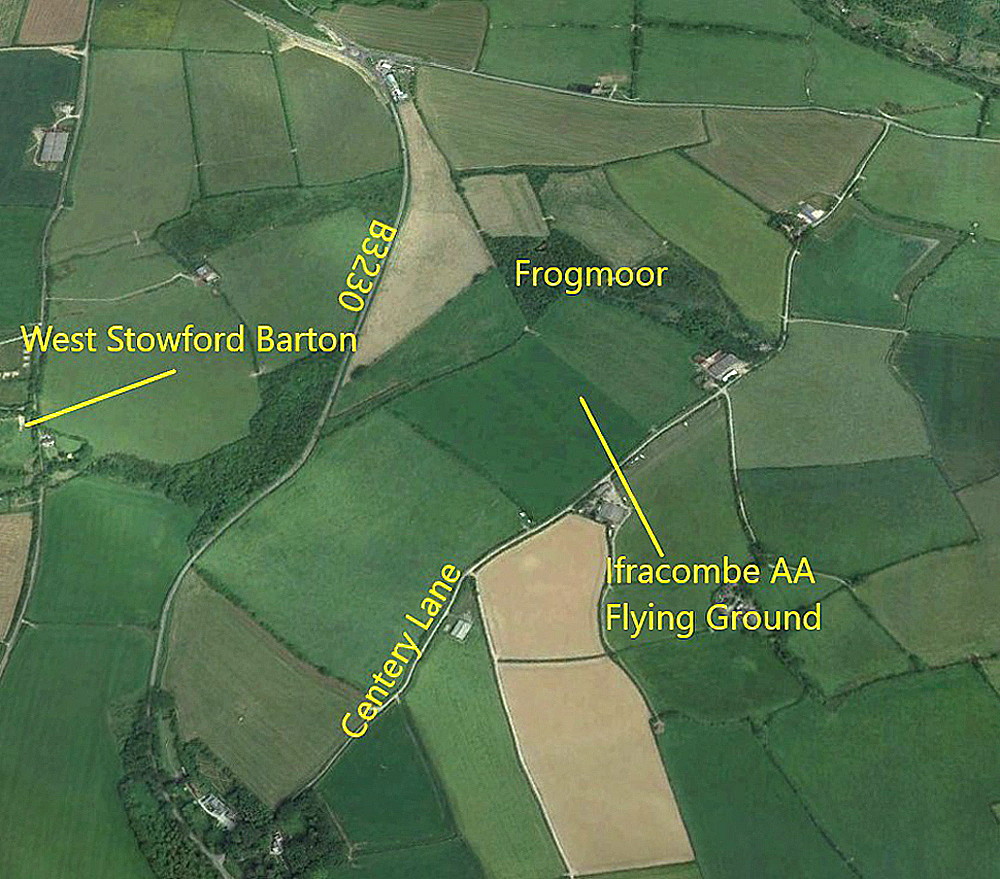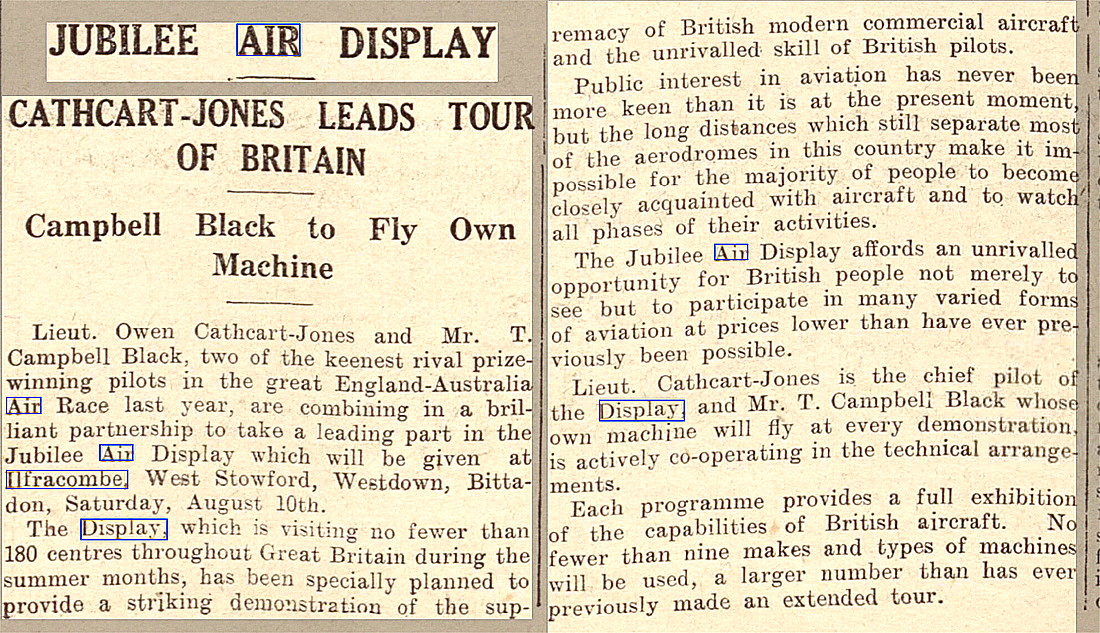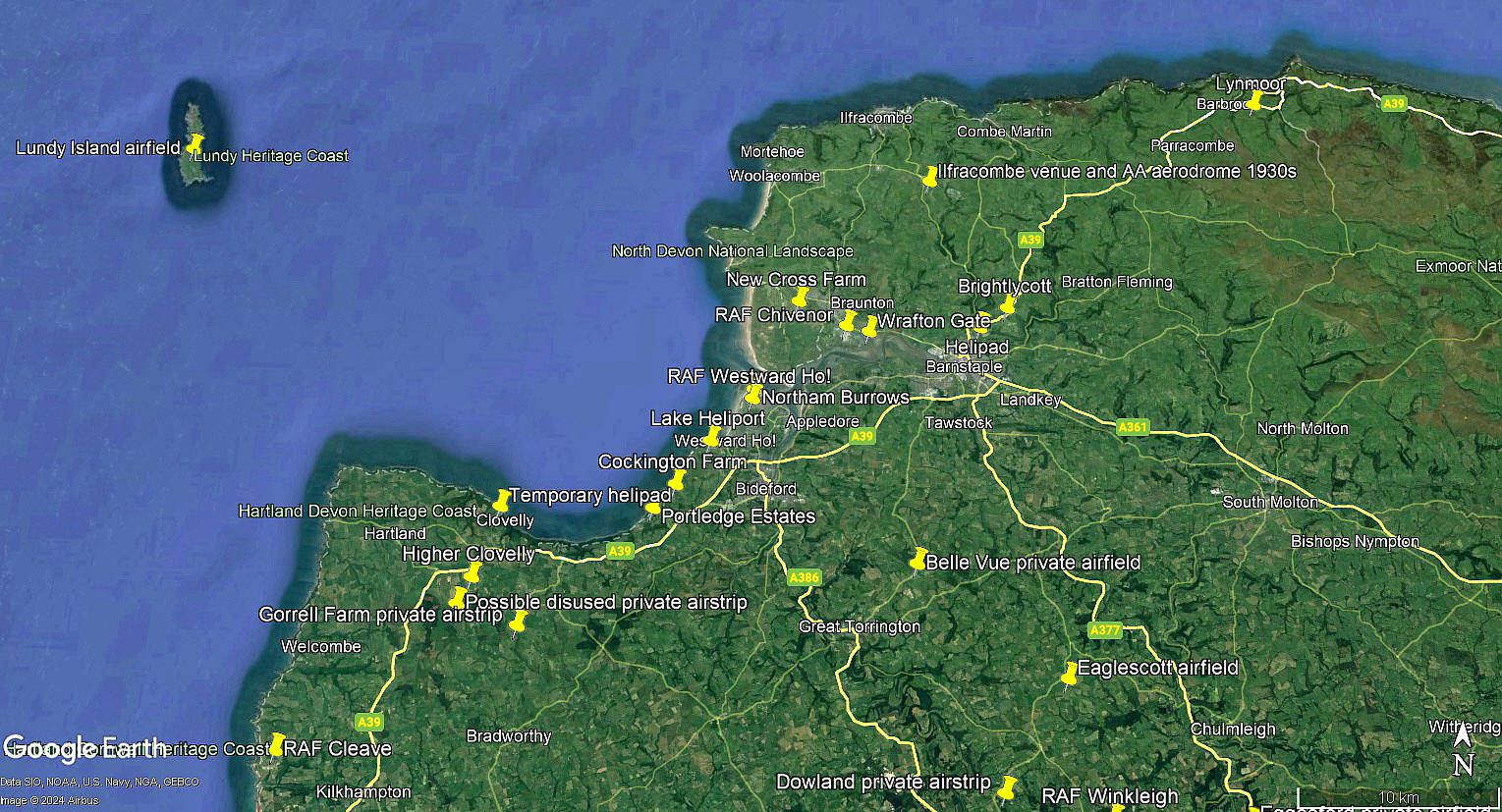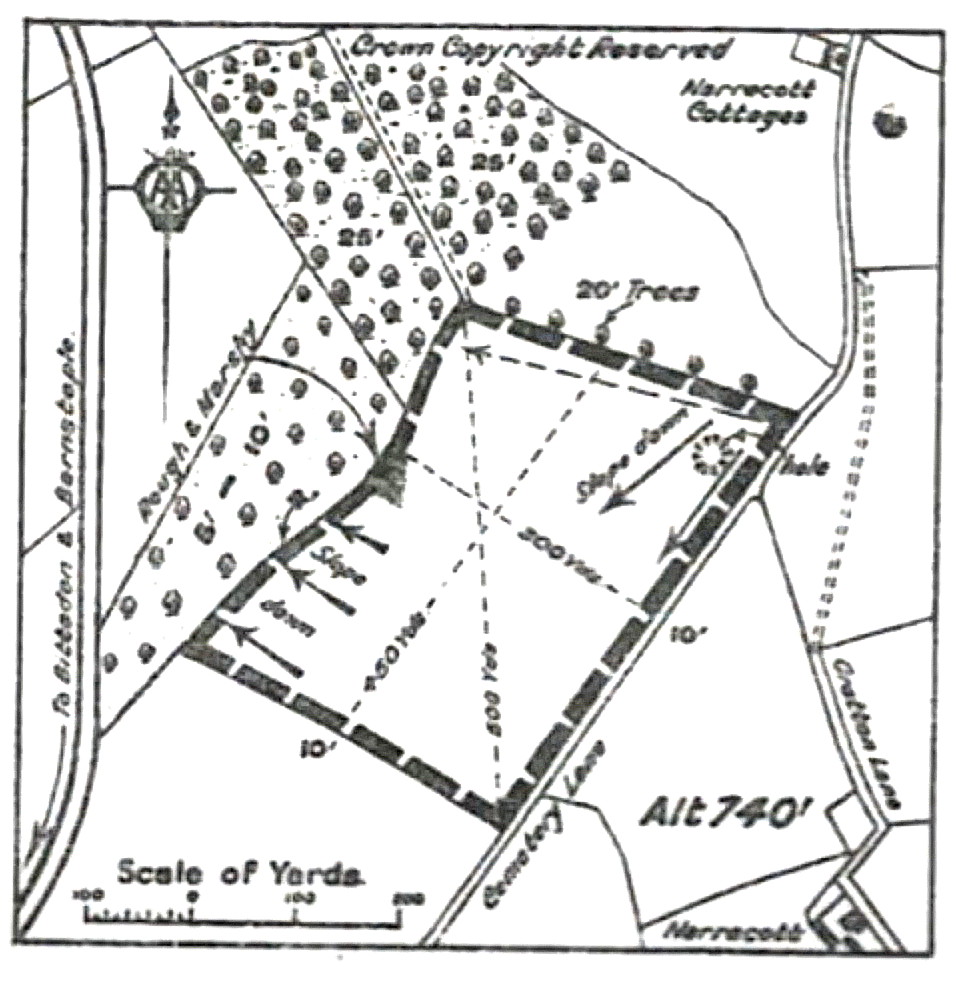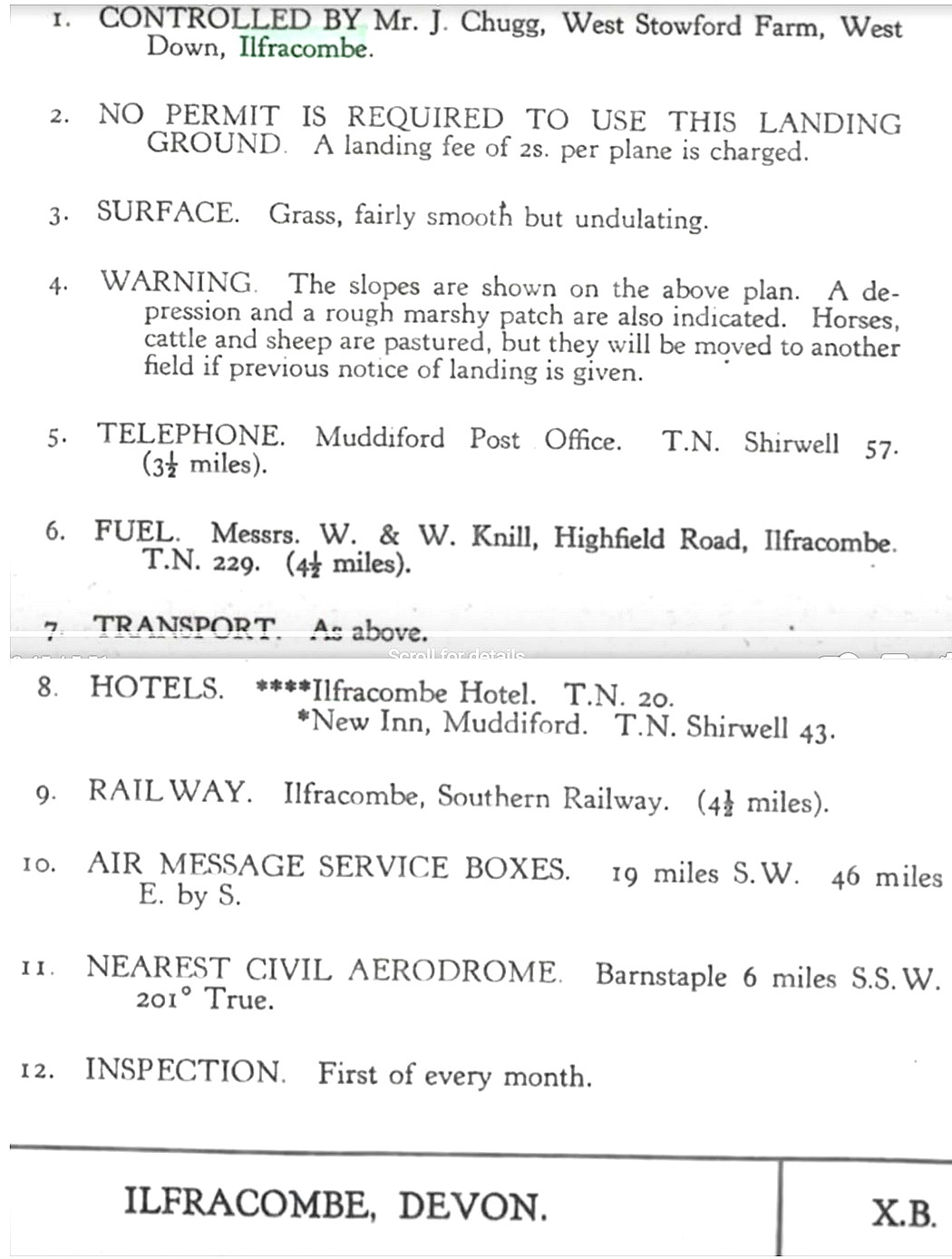Ilfracombe flying sites
Note: This map only shows the position of Ilfracombe town within the UK.
ILFRACOMBE see also MULLACOTT
ILFRACOMBE see also WEST STOWFORD FARM
ILFRACOMBE: Temporary flying site, possibly on the small beach or more probably from the harbour?
NOTES: On the 10th June 1912, Henri Salmet flew around Ilfracombe at 1500ft but it appears he didn't land here. However, it appears that in June 1914 Salmet returned and was visiting Ilfracombe with his trusty Blériot and almost certainly offering joy-rides. It is quite possible that Salmet had floats fitted to his aeroplane on this visit. This strikes me as being an incredible undertaking for the time and fills me with admiration. It seems hard to imagine just how he went about it.
The main problems would have been, I suppose, finding safe storage for the aeroplane, obtaining fuel and maintaining and repairing his Blériot of course. Heavy landings and similar hazards meant that a lot of work was often needed on his aeroplane to keep it ‘airworthy’. He had a small team on hand to attend to these requirements but are any details known about who these worthy mechanics and fitters were today?
It appears that he took off for WESTON-SUPER-MARE with a passenger, a Mr H Van Trump from Taunton, routeing via Watchet where he had promised to give a display. Approaching Watchet and over the sea the engine failed. The accounts say that they only suffered the indignity of a dunking and both of them were rescued by local lifeboatmen. Salmet brushed the episode off by saying it was not the first time he had recieved a drenching and his unruffled passenger stated, “It was a bit of an experience.” Even so he declared he would fly again with Salmet at Weston! The Blériot was towed into shore by a Norwegian steamship.
ILFRACOMBE: Temporary aerodrome venue at first, later to become an A.A. (Automoble Assocation) listed and recommended aerodrome.
NOTE: Also known as BITTADON, WEST DOWN, WEST STOWFORD FARM as well as ILFRACOMBE.
FLYING CIRCUS VISITS
Operated by: C D Barnard Air Tours 22nd June 1931. Sir Alan Cobham's National Aviation Day tour 23rd August 1932. Jubilee Air Display 10th August 1935
Location: Just E of the B3230, W of Centery Lane, about 3nm SSE of Ilfracombe town centre
A MICHAEL T HOLDER GALLERY
We have Mike Holder, a great friend of this 'Guide', to thank for looking into this location and making sense of it. Prior to this I had a hotch-potch of notes about this area gleaned over the last quarter of a century, with various names attached, but all it now seems - the same location! I have retained a seperate listing for WEST STOWFORD FARM, because that differentiates it from being a temporary venue used by 'Flying Circus' operators.
Article One was published in the North Devon Journal on the 4th June 1931.
The advert was published in the Western Times on the 19th August 1932. The Article Two was published in the North Devon Journal on the 25th August 1932.
The Article Three was published in the North Devon Journal on the 8th August 1935. The local area view is from my Google Earth derived database.
LAST BUT NOT LEAST
It might seem extraordinary today that the Automobile Association was so involved with aviation in the 1930s, and indeed after WW2 having aircraft reporting on major road traffic problems. But, in those earlier days the A.A, was rather elitist catering for the needs of the wealthy, many of whom had their own aircraft.
On the roads A.A. their 'officers' would be stationed at strategic places and salute members sporting the A.A. badge on their cars. Telephone boxes were installed all over the country for which members had a key. Inside they had basic provisions to help members keep their cars going, but, if in difficulty, they could telephone for assistance. Message boxes were provided for pilots at their nominated Landing Grounds, regularly inspected by A.A. road patrols, so that a time of arrival could be sent ahead by 'phone.
NOTES: The visit by C D Barnard Air Tours on the 22nd June, was it appears, their 44th venue. It commenced at LUTON on the 1st April and terminated at HANWORTH AIR PARK on the 11th October 1931. Visiting along the way, some 63 venues. Note that the plan for this Tour to visit 150 towns proved to be hopelessly over optomistic. But of course, this was, or so it would appear, by far the largest Tour planned for 1931. The other two Tours being by Aviation Tours Ltd and North British Aviation Co Ltd.
The 1932 tour by Sir Alan Cobham took the country by storm. Nothing like it had ever been seen before and the schedule was relentless, day after day planned, mostly, for a seperate venue with very few two-day visits. It commenced at HANWORTH on the 12th April and finished at CHINGFORD on the 16th October, with no less than 174 venues nominated. And, or so it seems, they did display at the majority of venues on time.
As for the Jubilee Air Displays tour in 1935, not a great deal appears known about the details? Organised by Barker & McEwan King this tour seems to have been something of a flop? Yet they had arranged a much larger and longer tour in 1933, the British Hospitals Air Pageant project, the Sky Devis Air Circus Tour in 1934, and, in the next year following 1935, the British Empire Air Display tour in 1936.
ILFRACOMBE: Microlight airstrip
NOTES: Source, AAIB report. Is anything else known?
ILFRACOMBE RUGBY CLUB: Temporary flying site for a world record attempt
NOTES: In the middle of 2012 the production company for the “Toy Story” series of programmes presented by James May had planned to fly a model glider under fully pre-planned and independent ‘autopilot’ control across the English Channel. From Dover to Calais. The flight would be monitored throughout by a helicopter and a ‘self-destruct’ device was installed if any threat to damage or even injury developed. It was a smallish model, based on a typical model available in model shops, albeit with a heavily modified ‘new’ wing design with a far superior glide ratio, less than two metres in wing span weighing a few kilos. It was calculated that the launch height would have to be at least 8000ft.
Typically, being a programme commissioned for the BBC it was ill thought out, had no proper planning, and was to all intents and purposes a fiasco organised by a bunch of utter amateurs. So when well in progress the project team were informed by the French authorities they would not accept ‘a drone’ entering their airspace.
The second plan was to fly the glider model across the Bristol Channel, from near Ilfracombe to Lundy Island, over exactly the same distance, across the Bristol Channel. But the weather on the day defeated the attempt. Local weather forecasts in the UK are pretty accurate so one has to wonder why the attempt was even made? Only fools would proceed – but it went ahead with totally predictable consequences – the model ditching a couple of miles out.
The rest of the story is a little vague, probably relying on goodwill by some involved (?) The next day dawned full of promise, albeit clear but with a strong easterly wind. Some bright spark realised Lundy Island would be the same distance from Ilfracombe so a third attempt was commenced, this time with the launch helicopter reaching 10,000ft. The model made LUNDY with ease circling around for about an hour before landing alongside the airstrip.
So, with much bungling a world record was eventually made for a model glider. The reason I have given so much importance to this account is very simple; without models there can be little if any doubt that full-sized aeroplanes – either as gliders or with motors – would not have been developed? The same lesson still applies today – it is much better to inspect the characteristics of a new design as a model in a wind-tunnel.
We'd love to hear from you, so please scroll down to leave a comment!
Leave a comment ...
Copyright (c) UK Airfield Guide















